Top Digital Asset Management Software Features for Creatives
Discover key digital asset management software features that simplify collaboration, speed up feedback, and keep your creative work protected.
)
Quick Summary
This guide covers the most important digital asset management (DAM) software features for creatives and marketing teams. You’ll learn how tools like Picflow streamline collaboration, speed up feedback, and protect your content.
The Future of Creative Workflows Is Feature-Rich DAM Software
The global Digital Asset Management (DAM) software market is booming and is set to hit $13.02 billion by 2030. If you’re part of a creative team juggling more content than ever, feature-rich DAM software has become a necessity, not a nice-to-have.
Today’s creative work moves fast and demands tools that simplify collaboration, speed up client feedback, and maintain brand consistency across all channels. Modern creative professionals often manage thousands of digital assets monthly, from high-resolution images to video content and design files.
The goal isn’t merely to adopt a DAM system but to choose one with features that truly solve your unique creative workflow challenges.
In this Picflow guide, we explore the digital asset management software features that matter most in today’s content-driven world.
Why Listen to Us?
At Picflow, we’ve helped creative professionals across photography, marketing, and design simplify how they organize, review, and deliver work. Our platform features are shaped by real feedback from users who need speed, polish, and control. From branded galleries to advanced review tools, we’ve built our platform to solve actual workflow challenges that creative teams face daily.

What Is Digital Asset Management Software?
Digital asset management software helps teams store, organize, find, and share digital files such as photos, videos, and documents. Rather than relying on disorganized folders or endless email threads, DAM tools centralize content, making it easy to find, share, and secure.
But that’s just the foundation. The real value of a DAM lies in its advanced features and how seamlessly they integrate into your team’s day-to-day flow.
Modern DAM platforms, like Picflow, often include review features, metadata tagging, and access controls, empowering creative teams to work faster and smarter.
Why Digital Asset Management Software Features Matter
Speed and Efficiency: Eliminate hours of manual work with features like drag-and-drop uploads, bulk actions for dozens of files, and smart filters for instant content retrieval.
Professional Client Experience: Create stunning, branded galleries, capture precise feedback with sophisticated review tools, and ensure secure sharing to maintain professional standards.
Workflow Control: Gain complete command over your creative process. Version tracking prevents costly mistakes, access controls protect valuable work, and automated notifications keep projects progressing.
Top Digital Asset Management Software Features
1. Fast Uploader
A foundational DAM feature is the ability to upload files quickly and efficiently. Modern platforms have revolutionized this process with advanced upload capabilities that eliminate technical frustrations.
Key capabilities include:
Drag-and-drop functionality for intuitive file selection
Unthrottled upload speeds for efficient handling of large files
Batch upload support for multiple files or entire folders
Automatic file organization during the upload process based on format detection and sorting
Advanced upload systems also provide real-time progress tracking and error handling, ensuring successful completion even with occasional connection interruptions.
Picflow offers unthrottled, drag-and-drop uploads, allowing photographers to upload entire wedding galleries or marketing teams to handle large campaign assets without significant delays.
2. File Organization & Metadata Management
Modern DAM platforms go beyond basic file storage. They offer intelligent organization systems that keep your library clean, efficient, and easy to navigate, without manual effort. At the core of this system is smart metadata management, enabling fast file retrieval, precise categorization, and streamlined workflows.
Together, these tools turn a simple file repository into a highly searchable, dynamic content library.
Key aspects include:
Version control and file history
Automatic compression without quality loss
Format conversion capabilities during upload
Metadata extraction from file properties
Smart folder organization based on dates or content type
Customizable Tagging and Keywords
Advanced search and filtering capabilities
For creatives, this means spending significantly less time searching for files and much more time on actual creative work. With intelligent file organization, every asset is properly labeled, contextually placed, and ready to use. This is crucial for managing large content volumes and collaborating across teams.
Even small teams can benefit from intelligent file organization without upfront investment. Platforms like Picflow offer generous free tiers to experience the full value of smart metadata and asset organization before upgrading to paid plans.
3. Professional Gallery Design Tools
Your gallery often serves as the first impression for a client. A clean layout and intuitive navigation are important. A good DAM system simplifies the design of galleries that present your work clearly and professionally.
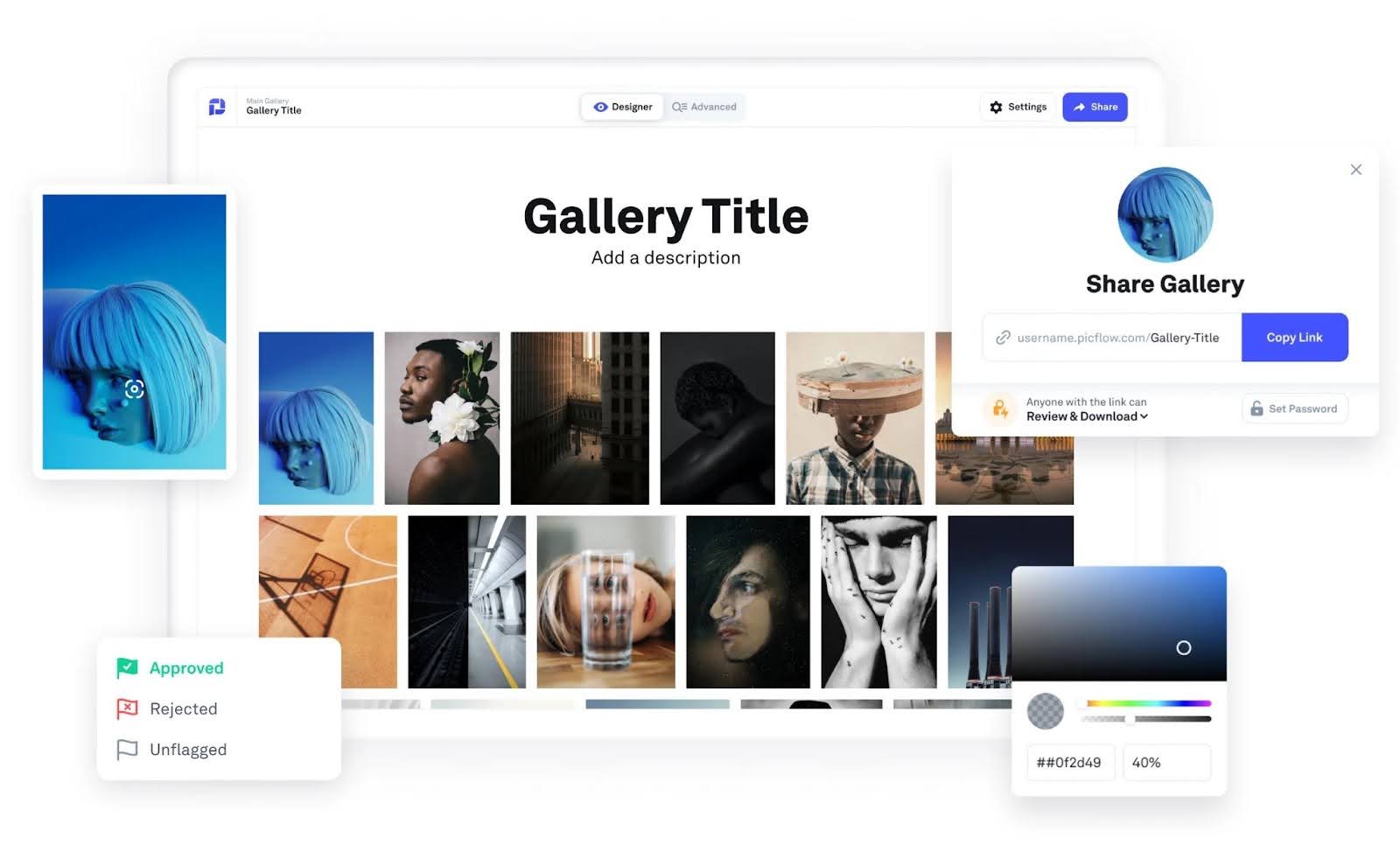
Essential features include:
Multiple layout options for different content types
Custom branding with logos and color schemes
Mobile-responsive designs that work on any device
Section organization for logical content grouping
Template libraries for consistent presentation across projects
Picflow’s Gallery Designer enables you to create stunning presentations that automatically adapt to any device. You can choose from multiple layout options, add custom branding, and organize content into logical sections, all without requiring technical expertise.
4. Collaborative Review & Feedback Tools
Among the most valuable features of digital asset management software are sophisticated collaborative review and real-time collaboration systems. These transform the feedback process from chaotic email chains into organized, highly efficient workflows.
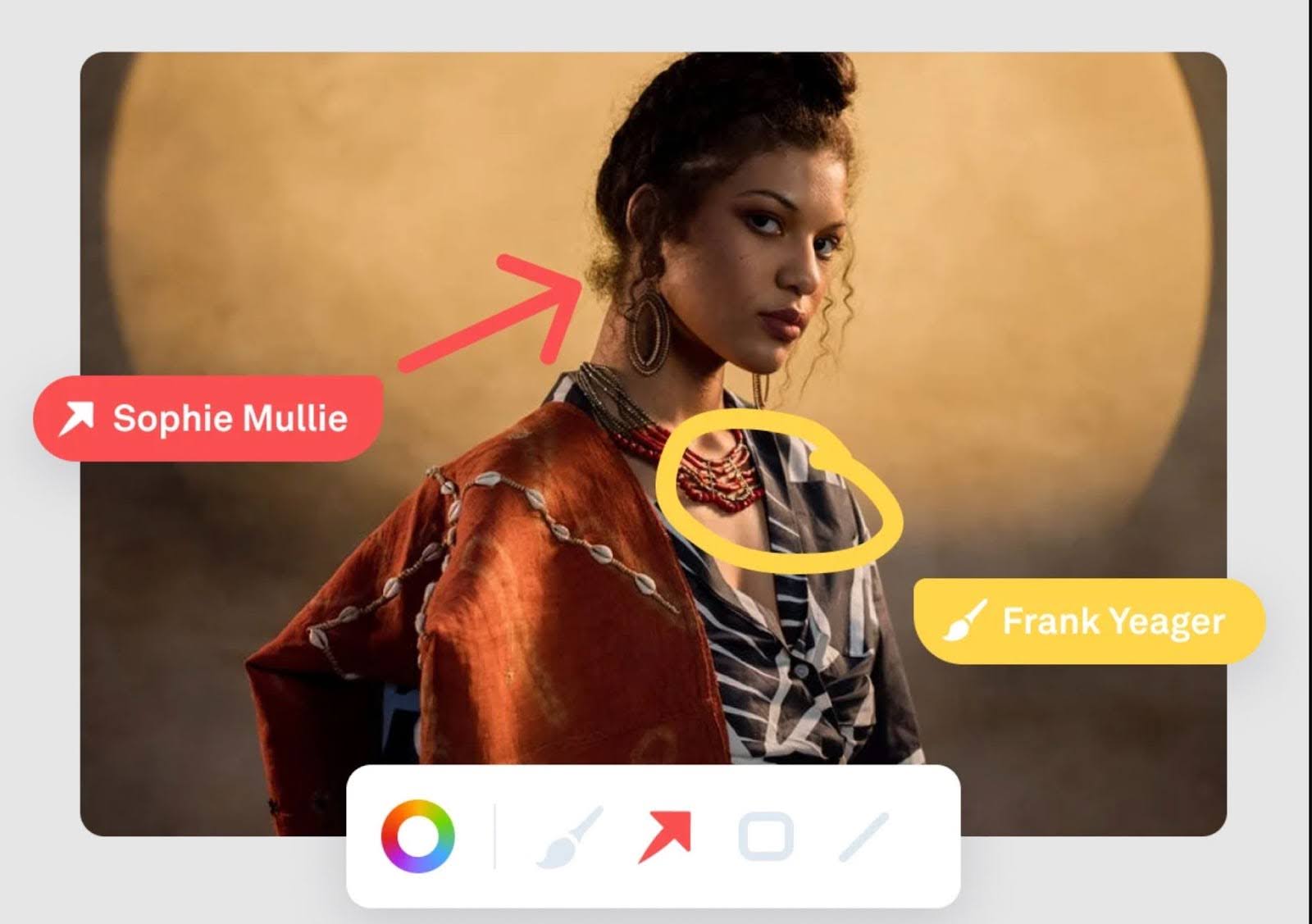
Essential review capabilities include:
Shared Workspaces: Create secure, centralized spaces where team members and clients can view, comment on, and interact with digital assets together. This consolidates feedback, eliminating scattered comments.
Live Commenting and Annotations: Allow collaborators to leave precise, visual feedback directly on images and videos. Picflow’s Client Reviews feature enhances this with favorites, flags, color labels, and custom feedback tools designed for creative clarity.
Multi-stakeholder Approval Workflows: Manage complex approval processes with features like rating systems, approval status indicators, and clear revision histories. This is particularly valuable for marketing teams and agencies with complex approval processes or multiple decision-makers involved.
Activity Feeds & Notifications: Stay updated with real-time alerts for new comments, approvals, or changes, ensuring everyone remains in sync and projects avoid delays.
Permission-Based Access: Assign view, comment, or edit access based on the collaborator’s role. With Picflow’s share link options, you maintain control over sensitive assets while enabling input from the right people.

5. Workflow Mode & Bulk Actions
Dedicated workflow modes represent some of the most powerful digital asset management software features for professionals who process large volumes of content regularly.
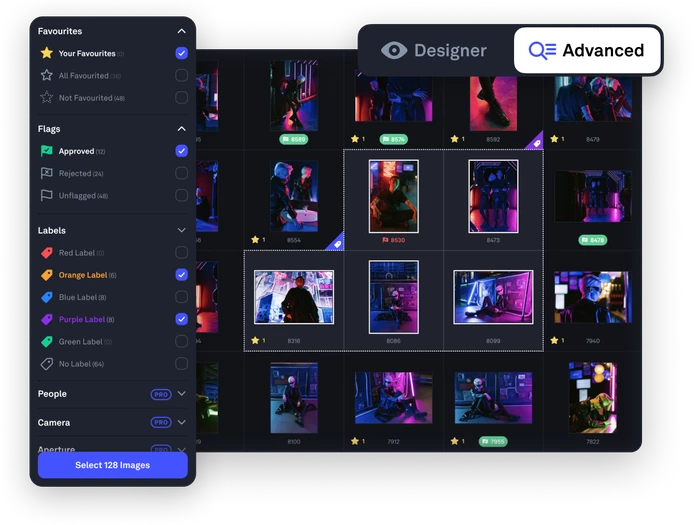
Key workflow tools include:
Advanced Review Filters: Quickly find images, selections, and reviews quickly with the filter options. This allows users to instantly view only favorited images, flagged content, specific color labels, or assets with client feedback, reducing processing time by focusing only on relevant content.
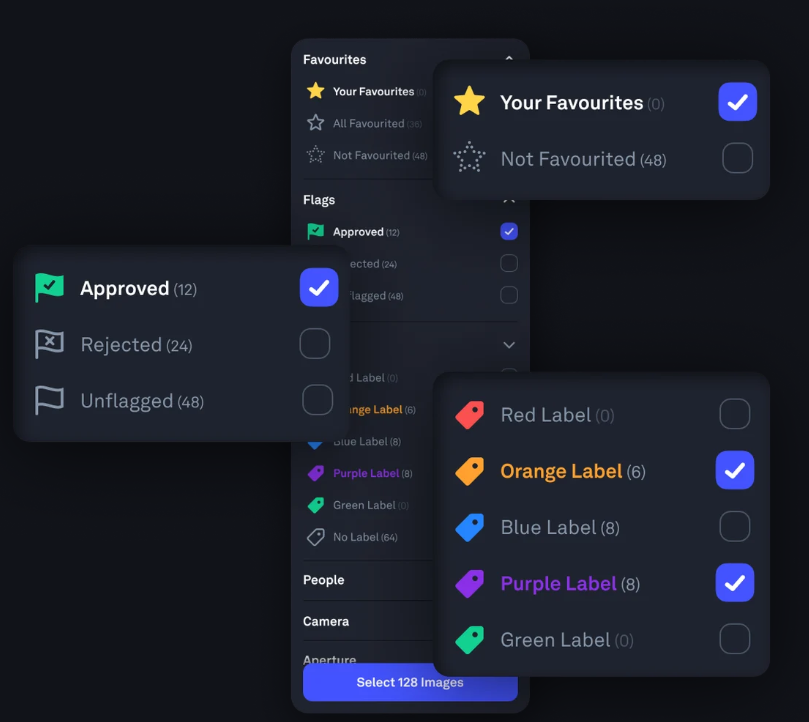
Multi-Selection and Bulk Actions: Review and manage multiple images at once using filters or selections. Users can select dozens or hundreds of images simultaneously and perform batch operations like applying metadata, moving files between folders, or preparing exports. This transforms hours of individual processing into minutes of efficient bulk management.
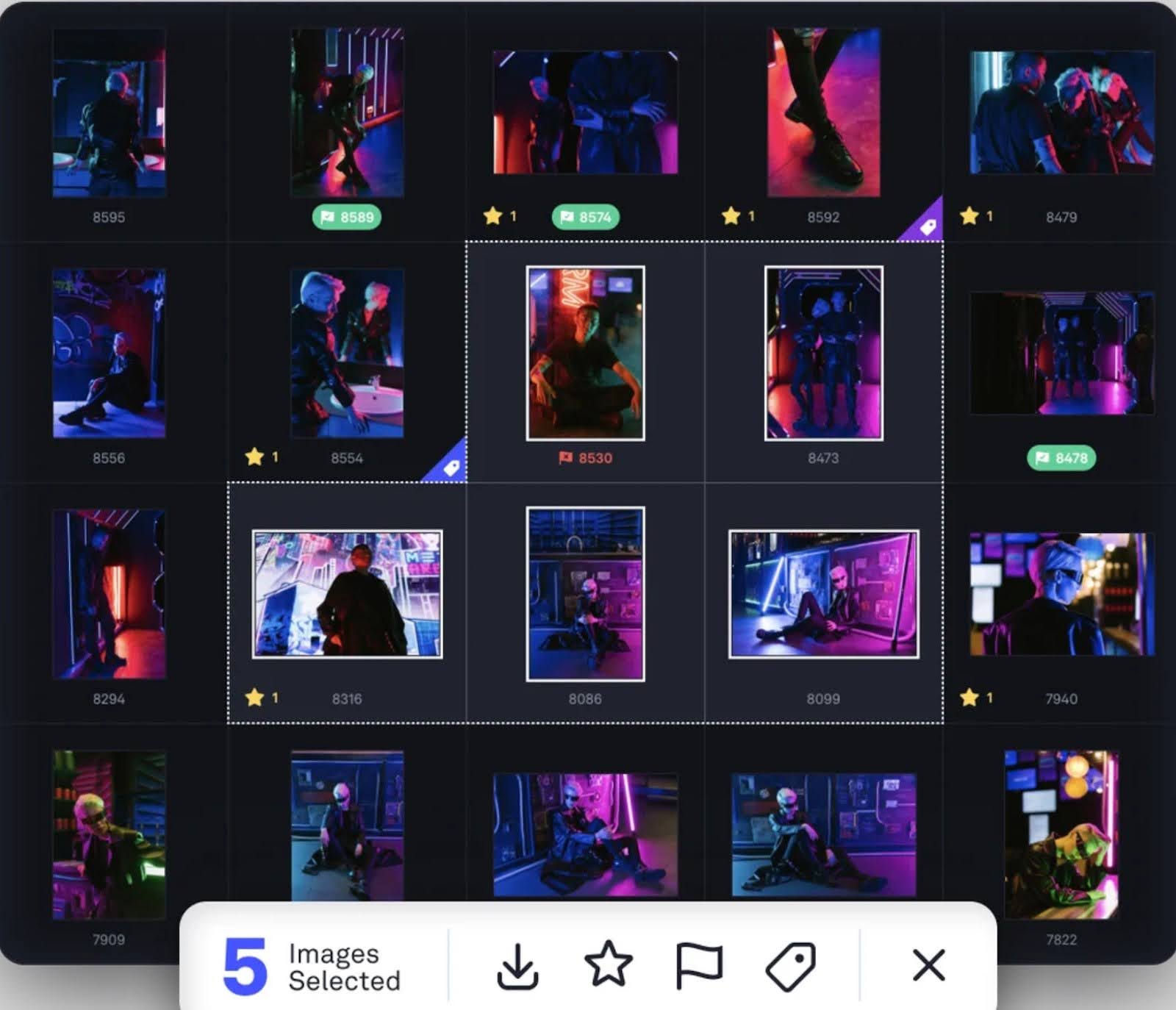
6. Export and Delivery Options
With a tool like PicFlow, you can download individual images, the full gallery, or a selection based on filters. The system supports custom naming schemes with metadata integration, batch export processing, and selective downloads based on client feedback. This allows users to create professional delivery packages that meet specific client requirements without manual reorganization.
Filename Export Integration: Copy/paste filenames of selections directly into editing software like Lightroom or Capture One. This bridges the gap between selection and post-production, eliminating manual file hunting and ensuring that only approved images enter the editing workflow.
Keyboard Shortcuts for Speed: Blast through images and reviews quickly with keyboard shortcuts. Power users can navigate galleries, apply labels, and process selections using intuitive keyboard commands for dramatically increased processing speed.
Professional PDF Exports: Export the gallery as a PDF with options to show or hide reviews. Create professional contact sheets and delivery reports that can include or exclude client feedback, serving as excellent client references, internal documentation, or delivery confirmations.
7. Built-In File Conversion Tools
Modern digital asset management platforms eliminate the need for separate conversion software by including powerful processing tools directly in the interface.
Conversion capabilities include:
Multi-format support for various file types
Browser-based processing without software installation
Batch conversion for multiple files simultaneously
Quality optimization for different use cases
RAW file support for professional photography workflows
Picflow's Image Converter exemplifies this approach, offering free format conversion directly in the browser. Users can easily convert images into any format without registration requirements, making it accessible even to those exploring the platform. This feature eliminates the friction of format compatibility issues that often slow down creative workflows.
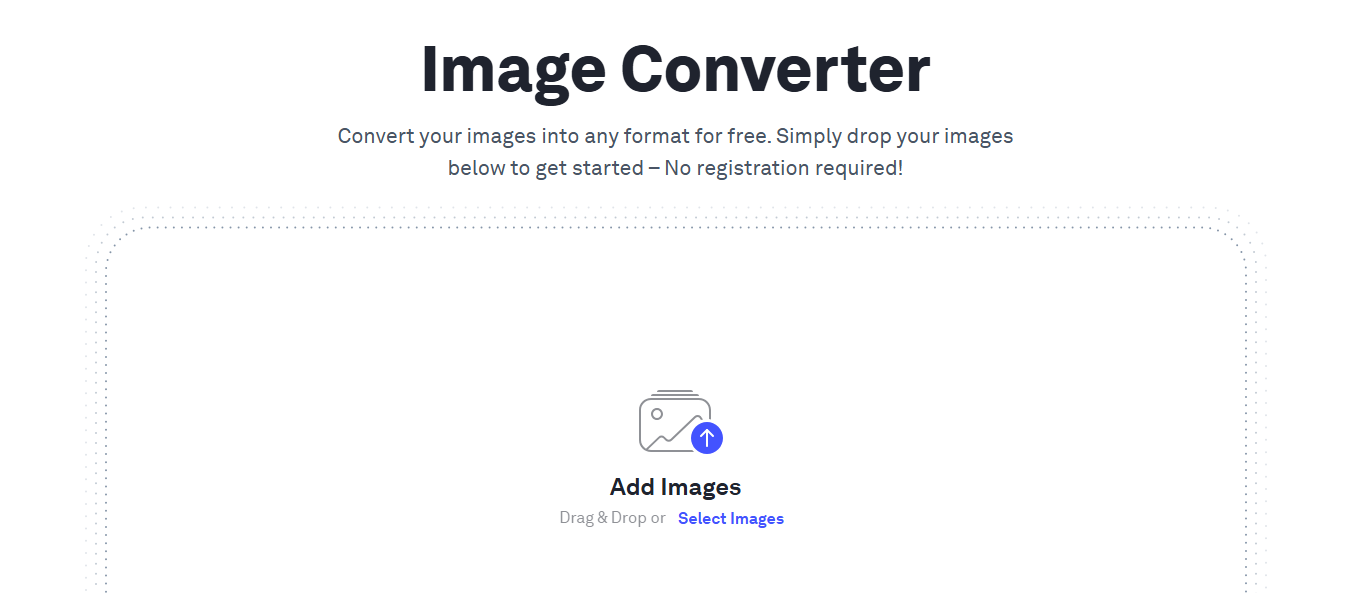
A comprehensive DAM system should handle more than just JPEGs. Picflow’s RAW converter supports a wide variety of file types, helping creative teams manage all their assets in one place. Supported formats include:
RAW camera files: Ideal for photographers working with uncompressed images.
Video formats: Enables multimedia teams to manage footage alongside photos.
Documents: Allows marketing or creative teams to store and preview PDFs, presentations, and more.
Vector graphics: Supports design files for scalable graphics workflows.
Audio files: Ensures sound assets are included in complete multimedia projects.
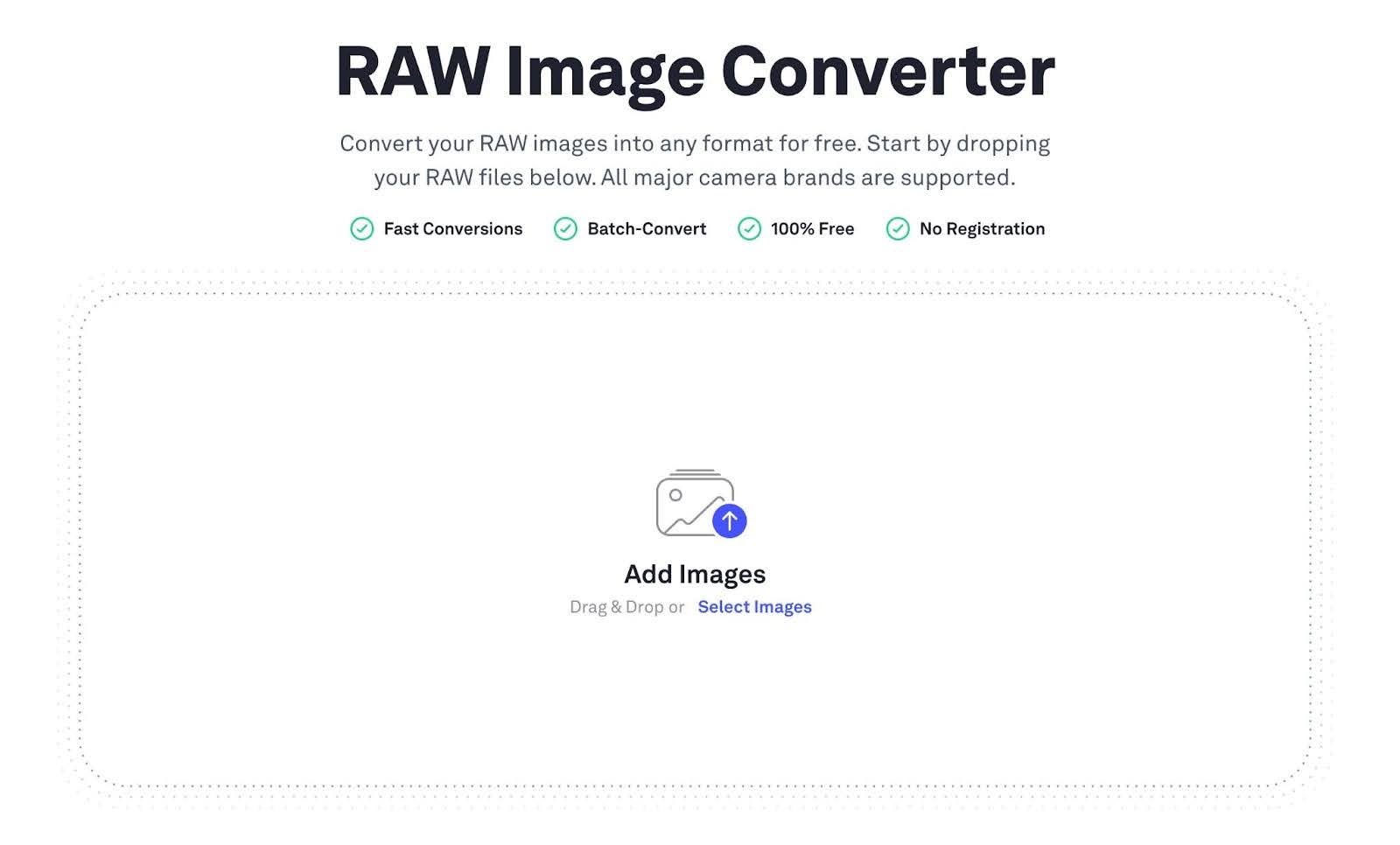
With Picflow’s preview capabilities, you can check content across these file types without downloading, keeping your workflow smooth and organized.
8. Privacy & Access Control
Professional digital asset management software includes comprehensive security features that protect valuable creative assets while enabling effective collaboration.
Security features commonly include:
Password protection for sensitive galleries
Expiration dates for time-limited access
User role management with granular permissions
Download restrictions to prevent unauthorized copying
Access logging for security auditing
Picflow's Security & Privacy features include sharing links with password protection and various access options. This ensures creative professionals can share work confidently while maintaining control over how assets are accessed and used.
Advanced privacy features extend beyond basic access control to include sophisticated protection mechanisms for sensitive creative work.
Privacy protections include:
Watermarking options for preview protection
View-only modes to prevent downloading
Geographic restrictions for compliance requirements
IP-based access controls for enhanced security
Client-specific privacy settings for different relationships
These features are particularly important for photographers and agencies working with high-value creative content or clients with strict confidentiality requirements.
9. Cross-Platform Compatibility
Creative teams and clients use a wide array of devices, making cross-platform compatibility a must-have for any DAM. This ensures your assets are always accessible, no matter how or where they’re needed.
Look for:
Cross-browser support: Seamless access on Chrome, Safari, Firefox, and other popular browsers.
Mobile optimization: Review and share assets seamlessly from smartphones and tablets, perfect for on-the-go approvals.
Cloud-based architecture: Use any operating system, whether Windows, Mac, or Linux, since everything runs in the browser.
Automatic sync across devices: Keep files updated so your latest work appears instantly on every device you use.
This level of compatibility keeps creative workflows moving smoothly, prevents delays, and ensures team members and clients can review and comment on assets from anywhere.
Transform Your Creative Workflow with Picflow’s DAM Features
The digital asset management landscape demands more than basic file storage. It requires sophisticated features that transform how creative professionals work, collaborate, and deliver exceptional client experiences.
Picflow's comprehensive feature set addresses every aspect of the modern creative workflow, from lightning-fast uploads and stunning gallery presentations to advanced review tools and productivity-focused workflow modes.
Whether you're a photographer managing wedding galleries, a marketer coordinating campaign assets, or a designer collaborating with remote teams, these powerful features eliminate workflow friction and elevate professional standards.
Ready to transform your creative process? Try Picflow for Free.
)